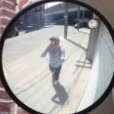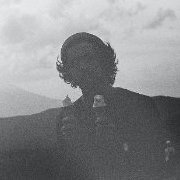-
Posts
363 -
Joined
-
Last visited
Profile Information
-
Occupation
Industry Rep
-
Location
Plattsburgh, New York U.S.A.
-
My Gear
Nizo, Beaulieu, Sankyo, Canon, Nikon, Bolex, Leicina, GAF, Chinon, Revue, Porst, Bauer, Yaschica, Argus, Revere, Kodak
-
Specialties
Photography, Cinematography, Videography, Filmmaking, Laboratory Still & Cine Processing & other services, Camera & AV Repair, Chrysler, Air Cooled VW, Citroen, camera collecting.
Recent Profile Visitors
-

Goodbye remjet, hello AHU?!
Martin Baumgarten replied to Joerg Polzfusz's topic in Film Stocks & Processing
If excess Halation is such a possible issue with the new forthcoming VISION film, I don't understand why KODAK just doesn't use a disolvable anti-halation dye as in their former VNF Ektachrome films. The dye dissolves in the Color Developer. Seems like such an easier fix, unless there's environmental issues with that dye they used. -
It's important that all electrical contacts have clean untarnished surfaces: thus switches, relays, dial potentiometers, etc. The motors rarely fail in these cameras....you'd have to have run tons of film, way beyond 100 cartridges or more. Figure even at 100 cartridges, the motor for film transport runs for about 333 minutes if filming at 18 frames per second. Less time if using 24 fps, but of course it runs a bit faster. The motors are sealed pretty good, but depending where the camera was stored idle for a very long time [years] mild corrosion could've built up on the internal commutator and brushes. This would require removing the drive motor, opening it up and cleaning after checking it out first. However, I would first eliminate all electrical connections that bring power to the motor......and the two weak areas are the trigger switch contacts and the Frames Per Second Rate Switch. Thus the contact wiper on the resistor surface must be clean and free of tarnish as well as the surface. Some may use a Dialectic Grease for lubrication and tarnish prevention as well. Another easy way to know how the motor works, would be to run it freely by power it separately......so disconnect power to the motor from the camera, and power the motor directly from an equal power supply. If she runs fine, you'll know for sure the problem lies in the camera body somewhere. Of course....a motor running freely isn't the same as under load, but close enough to know that's not the problem. You can create some drag on the motor shaft with two fingers while running it to see how powerful it is. Good luck, be careful in all your work!
-

New Never Used Bolex SBM For Sale
Martin Baumgarten replied to Dennis Toeppen's topic in Cine Marketplace
Well folks, to be fair, despite what anyone thinks or knows.....he's offered excellent equipment for sale, and is probably open to offers from seriously interested persons. I wouldn't pay that much, but then it's way out of my price range. BOLEX cameras are being made SLOWLY in LOW quantities from remaining parts left over at the factory where only two guys now work. Like anything else.....a items are only worth what someone is willing to pay for them. Lastly, everyone here has offered a heartfelt response and regardless how taken, is still interesting to read and ponder. I'd personally prefer the standard aspect ratio and shoot anamorphically, so there's room for either a magnetic or optical sound track. So my older BOLEX H-16 is fine for that. -
Ricky Hargrove started following Martin Baumgarten
-
Sadly, years ago when there were many labs processing KODACHROME film, the quality was all over the place. I've also experienced deterioration of KODACHROME film processing from the 1970s done by Drewry Photochrome Corporation in California. From my own analysis the problems stem from poor washing, certainly in final wash, and lack of Stabilization. This has caused severe brown casting and also large brown spots. The overall look at first is one of the film being darker, but it's due to these awful processing stains most likely from unwashed chemistry later in the process. The damage is done, and not much can be done to repair this. To a limited extent, the film can be digitized and adjustments done. Perhaps with the newer A.I. software out there, such as from TOPAZ or similar, it can be repaired to a greater extent than it is now. For the actual film, even rewashing and stabilization hasn't been able to fix this since these are severe chemistry stains that bloomed out in the film emulsion and crystalized deeply. Good luck though. I want to add that ALL of my KODAK processed KODACHROME films still look great. I even have a uncle's old films from the late 1930s and they still look fine, except for emulsion cracks from poor storage prior to my getting them. You get what you pay for....and for saving a lousy couple dollars per roll, going to a cheaper lab, a lifetime of images ruined resulted.
- 5 replies
-
- film degradation
- archive
-
(and 1 more)
Tagged with:
-

A 3D Printable Cartridge To Fit Fuji Single 8 Cameras
Martin Baumgarten replied to christophernigel's topic in Super-8
Sorry, just saw this question today, 14 December. No, I've stopped processing customer films this past Summer, and am working on completing all customer jobs soon. I will take a sabbatical for awhile and try to get my own work done, as well as various laboratory upgrades [machine processing, HD/2k/4k film transfer setups, and lots of other stuff I just never seem to have time to get to]. It's been 50 years now, I should've stopped 2 years ago, but wanted to reach 50 years. In the meantime, anyone needing old films processed, there's FILM RESCUE, and of course, for 8mm, Super 8mm and 16mm Ektachrome 100D there are various labs, with Dwayne's Photo being the lowest cost. We're fortunate today to still have a few good labs out there supporting Super 8mm film making. -
I just saw this age old posting regarding the SuperMag 400, which was designed and built in Arizona. A lot of work had gone into it and it was sadly plagued by film transport problems. It relies on the film claw to move the film through, and that is just too difficult. I own one, and had hoped to one day modify it so it has a center sprocket internally similar to the Beaulieu-Ritter Super Drive 60m/200ft magazine [which is a reworked Beaulieu R16 magazine for Super 8mm]. Had they adopted a similar sprocket drive driven off the film core advance cog in the camera as was done for the Beaulieu, then it would've worked. No matter how careful I was, all my tests showed unsteadiness. The initial advantage was that it was made to run in any Super 8mm camera that was built to accommodate the original KODAK 200ft Cartridge [but the KODAK 200ft cartridge has an internal plastic double sprocket and an internal spring motor that winds itself while running the film and sits in the middle of the double coaxial Supply/Take-up Reels. That's how KODAK was able to avoid a mechanical linkage to the camera other than using the core cog drive and the film claw]. Even the Beaulieu-Ritter Super Drive Magazine was only made in small limited production numbers and had/has limited support for those few still using it today in 2024.
-

A 3D Printable Cartridge To Fit Fuji Single 8 Cameras
Martin Baumgarten replied to christophernigel's topic in Super-8
Despite how nice this is of Jenny to offer to the community, and I thank her for it.....I have decided to keep locating used or unused FUJI Single-8 cartridges for reloading. Most I have bought off eBay, and there are Japanese sellers that are selling 'new' film expired decades ago for crazy high prices [not all that dissimilar from folks here in the USA not knowing anything about film expiration problems selling various Super 8mm film types for crazy prices]. Early FUJI cartridges open easily as they were only sealed with two pieces of tape. Later ones are sealed, but can be opened to varying degrees of success via a couple different methods: gently but firmly twisting the shell to try and break the seals, and also via scoring all around the seals with a single edged razor blade or Exacto Knife or similar to weaken them prior to prying the main cover off the chassis with a butter knife, pocket knife, gentle twisting method etc. The originals were offered in varying ASA/ISOs: 25 Daylight, 50 Daylight, 50 Tungsten, 100 Daylight, 200 Tungsten, some in Black & White Reversal Neopan, and in Color Reversal for Daylight (ISO 25) and Tungsten/Artificial (ISO 50 and 200) but with #85 Daylight Filter for Daylight Color usage. As mentioned, the cartridges indexed most Single-8 cameras with the curved notch on the bottom of the chassis of the cartridges, and for a couple others using these nibs near the film gate. Anyhow, despite some limitations in reloading ease and the lower amount of cellulose triacetate film that will fit into the Single-8 cartridges, it's doable! On another historical note, KODAK had originally planned/experimented with putting 100ft of Polyester [Estar] based film stock into their Super 8mm cartridges. The only ones sold this way were the "Surveillance" films made in both Black & White and Color Negative, with later Color Negative ones reduced to 50ft acetate film in their long running ASA/ISO 200T film, before the Vision Films were introduced years later. -

Angular 'shadow' in frame. Any ideas on what's causing it?
Martin Baumgarten replied to Chris Erickson's topic in Super-8
I'm sorry you're having such problems. Since the "shadow" appears identical in each frame....it is not a processing problem. This is most likely being cause by something in the camera. It could be a beam-splitter prism issue where the prism block is cemented together, the cement is staining/separating/or developed a fungus. This would not be necessarily visible in the viewfinder since the split wedge of the prism is diverting lens imaging rays to the viewfinder...and the remainder, the bulk, are passing thru the prism to the film plane. However, some later XL type Super 8mm cameras used a tiny prism or fiber optic to pick up the image to the viewfinder. This design doesn't rob light from the film path. I can't remember which design your camera uses, and am unable to locate my CANON 514XLS which uses the same viewfinder setup optically as the silent 514XL. - - - - What you can do, is shine a bright flashlight thru the viewfinder end of the camera and look into the lens and see if the visible light is offset from the center of the lens. This is one clue, another is to shine the light into the lens and examine carefully if you can see an off-set prism or fiber optic. Lastly, or maybe firstly, shine the light thru the camera's film gate while running the camera. Do this on a tripod with the camera setup near a white wall or tape some white sheet paper to the wall. Focus the gate outline image via adjusting the focus and zoom until it's as clear as can be and examine that for that odd effect you were getting. Whatever is causing it...should be visible this way. You might have to adjust the flashlight so it's not as bright [many small modern ones allow you to click them for brightness variety]. Also, while shining the light thru the film plane gate.....look into the viewfinder to see if the light doubles back into the viewfinder....if it does....the design uses a beam-splitter. If not....try the light from front and compare. IF the problem is not a beam-spitter, it could also be a small piece of film fragment stuck somewhere and causing a glint of light to create this image on the film......or....if the camera uses a built in UV Filter as part of the optical path, which replaces the #85 Daylight Filter when that's moved out of the way.....it could have an issue. With so many cameras that I've repaired over decades.....I frankly can't recall which setup this camera uses without examining one as outlined above. Either way...DO NOT use this camera since film, developing, and scanning are SO expensive these days! Use another camera. Once you either discover what the problem is....either way, you'll probably want to use another camera. Repair costs to fix this issue, is way more than the camera is worth. And...there are zillions of Super 8mm cameras out there! Good luck! -
This is a very doable project. I've done this many years ago, but without digital assistance. We just used various devices to photograph the Super 8mm frames onto still camera film, either 120/620 [using the Testrite Instrument Co. CineLarger device which were made for 8mm, 16mm and 35mm....older ones used 620 film and the later models used 120 film] or 35mm [using special slide copying devices also made for movie film frames]. In the 1930 the MOVIEMATIC 16mm movie camera also shot still frames and was advertised as the 3-in-1 camera: shooting home movies, still photos, or Flip Books. The magazines are a simple design as is the camera, with short lengths of 16mm double perf film. You sent the film back in for processing, and depending on which film length [40 frame, 60 frame, or 80 frame length mag] determined which service you received. They would process and put together a small flip book which was actually small printed photos of the movie frames and bound together. This can still be done photographically or via digital and an inkjet printer to make your own. The copy devices will fit various DSLRs to render the still images needed for printing. Flip books from personal home movies were popular decades ago. I often thought of using a motorized 35mm camera to make some as well, but now with digital it's a lot cheaper using "burst mode" on the cameras which even tiny pocket digital and cellphone cameras have.
-

Need help identifying a Super 8 package
Martin Baumgarten replied to Kevin Olmsted's topic in Super-8
Hi Kevin, that was just one of the ways the early NIZO low cost models were sold. Thus the printed sheet explaining "Ten tips for shooting your first film". The case is about the cheapest you could get....nothing at all like the NIZO quality aluminum cases BRAUN made available for their camera lines. It's sort of a throw away type case....or with care could be used....but it really just displays the camera as it was sold. This sold closed of course and came in a cardboard printed sleeve with nice graphics on it, the way other NIZO cameras came in either hard styrofoam or foam shells in fancy cardboard sleeves. Nice looking though. -

Super 8 ultra-wide suggestion and ideas help
Martin Baumgarten replied to Kai scott's topic in Super-8
Fallen Angels is newly presented in the 2.39:1 aspect ratio, a format that Wong had originally envisioned for the film. This is a WIDE Image Aspect Ratio, not just wide. The 8.6mm lens in 35mm motion picture format, would approximate roughly twice that focal length in 35mm still photography, thus 17.2mm. Keep in mind...Super 8mm is 1.33:1 aspect ratio with the original format. In later years, there has been a gate widening to get it closer to but under the 16:9 TV HD aspect ratio [now that's been super ceded crazily with 2k, 2.7k, 4k etc making TV sets wider and thus now movies being cropped again on top & bottom to show the full aspect ratio. Anyhow....are you looking for a WIDE ANGLE viewpoint on a Super 8mm camera? If that is all, there are many Wide Angle add on lenses of various wide focal length changes that will work [e.g. 0.75x, 0.054x, 0.50x, 0.45x etc]. Many of these will work fine on existing cameras, just using step-up filter thread adapter rings [all that stuff is so cheap these days from China via eBay etc.....and even the lenses being made there....and from my own experience are all decent performers]. So, ULTRA Wide Angle? Or WIDESCREEN [larger than 1.33:1 aspect ratio]? Or a WIDESCREEN ULTRA Wide Angle [doable in Super 8mm via using Anamorphic lens & a Ultra Wide Angle Adapter on that lens......it's a LOT of glass surfaces of course.....but with care in composition/light and using a good lenshade, can be sharp and vibrant despite all the glass] This will not be cheap though, since if you want zoom on your camera for various focal lengths.....you will have a hefty rig setup. Anamorphic lenses have risen in their prices on the 2nd hand market due to various interest in special effects, not necessarily WIDESCREEN. There are very small Anamorphic lenses made to fit Cellphones, and they might/would work with some fixed lens Super 8mm cameras that only have their prime lens, not a zoom. It's all bit complex of course...but anyhow....an Ultra Wide Angle Lens can be added over that to get an Anamorphic Wide Aspect Ratio in Wide Angle. The ones I've seen are 1.25x 1.55x, some less that those. The 1.55x is extremely close to the WIDESCREEN 1.5x lenses such as the Iscorama and others, which would get you to a 2:1 aspect ratio in Super 8mm.......not the same as "Fallen Angels", but widescreen and wide angle. Using anamorphic lenses requires some technique adjustment since a tall and skinny image is presented in the viewfinder on an SLR type camera [unless you get a tiny A-lens and turn it sideways in front of the viewfinder to see the full aspect ratio, which means more cost and playing around of course]. You'll also need Anamorphic Lens holders, adapters etc to fit what you buy to your camera. - - - - - - - - - - - Since all this could be quite expensive.......it's not in the realm of your budget expenses. So....Ultra Wide Angle alone would be since you can get a good lens and filter ring adapters all under $100 from eBay vendors. IF you get a very wide angle lens.....you could just mask the image and compose inside the masking. There will be some grain increase since you're cropping the Super 8mm frame to achieve a WIDESCREEN format aspect ratio...but it has been done many times by enthusiasts over the years. Usually they didn't crop more than for a 2:1 aspect ratio...but with the modern Color Negative Vision films from KODAK, the grain is fine, and of course.....you are working with a small gauge film here. Want to really save? Just use a cellphone, with a cellphone frame which allows ease of tripod, monopod, selfie stick etc support and get one of those multi-lens kits available from various eBay vendors from China. Yeah....it's NOT film.....but.....IF you project is all ending up on Digital anyway......and money is tight....heck, you can do all kinds of things...and then play in post production software to get what you want. Film WILL BE Expensive.....there's not a way around that, so think this all over carefully of course. Best of luck. -
While this is exciting news.....I'm dismayed that KODAK didn't offer a press release and extensive advertising. Also, after reading the Instruction Manual PDF.....sadly....and I don't know WHY.....but this new Super 8mm camera from KODAK will not record sound on the SD card at the "default" speed of 18fps. Perhaps they can change this in their software?!
-
Hi, I own a couple of Keystone Double 8mm cameras and the one you have is one of them. They all only run for about 20 to 30 seconds and the owner's manual also states this. This is quite common for the majority of USA built Double 8mm movie cameras from that era, same for my Revere cameras, and even the Bolex cameras of the 50s only have a similar run time.
-
Hi, if the images projected are not centered...then they are not centered on the film. The tolerances for projectors is such that there is a small amount of cropping of the frame in the projector gate.....but it's even all around the film. If there is any bias, it will be on the sprocket side of the film...but it would not be that severe! You didn't mention which Single-8 camera you are using. The simpler ones that are not SLR in design will be be very accurate......but you state TTL, so I'm assuming it is an SLR design. I would suspect that the viewfinder alignment is off center. Depending on which model, this can be adjusted/fixed on most cameras. To double check alignment quickly without using film.....shine a bright maglite or similar thru the camera's gate. Set the camera up on a tripod and near a piece of typing/inkjet paper A4 size, so close to it.....place some aluminum foil over the pressure plate in the camera to help reflect your bright maglite or pocket light/torch into the lens.....run the shutter.....and observe the illumination of the frame on the paper.....and compare this with the viewfinder. If they are not in alignment, you will see by how much. Until you are able to repair this, use this offset for composition if you continue to use this camera. I wish you best of success!
-
The EUMIG Nautica despite its underwater design, is basically the same camera as the EUMIG Mini-3. The lens is the similar short zoom non-focus design. The meter uses an external window in front and is not TTL. The film cartridge will move the Built-in #85 Orange Filter out of the imaging path via the push switch in the film chamber.....if the cartridge does not have the Filter Notch. And TRI-X film does NOT have the Filter Notch....so it doesn't mater if you set the Filter Switch on the side of the camera to Daylight or Tungsten...the cartridge pushes the Filter out of the way. In order to make use of the built-in Filter, you will need to break off a piece of the cartridge front wall to make your own "filter notch". This is easy enough to do with a pair of needle nose pliers, or a very sharp knife.....cut down a slit on either side where the notch should be, then just break off this tab you make. Okay now to your questions: [1]. TRI-X will be rated at ISO/ASA 160.....and the only way to drop that rating down via adding the built-in Filter is to make your own filter notch. So have set the filter switch to Daylight....didn't do anything...the cartridge had pushed the filter out of the way, thus rating the film at ISO 160. [2]. Yes, you are correct, it's 2/3rds of a Stop less light......IF you had a filter notch on the cartridge. But that was not the case so the film was shot without the use of the built-in #85 Filter and was rated at ISO 160. I have always made the Filter Notch on those cartridges that don't have one, IF I ever wanted to be able to make use of the Filter especially with B&W film to take advantage of the orange filter effects...absorb blue, render great sky and cloud details, and water looks great as well. TRI-X is rated at ISO 200 under Daylight and the ISO 160 rating still works fine within the film's exposure latitude, for most shots. [3]. As far as "pull processing" TRI-X goes, yes, it can be down and still looks fine. 1-Stop will not hurt it. I have pushed it up to 3 Stops also. IF the film is over-exposed.....as a Reversal Film, processed as Reversal......you will lose detail. If processed as a Negative, it will still have details, despite having some more density in it.....unless you pull the Negative processing a bit as well....then just normal density and still have all the details. [4]. Regarding "post digital processing", the best quality is achieved similar to Color Negative film, meaning exposing TRI-X for and processing it as B&W Negative. The "Look" is different between Reversal and Negative, so you would have to conduct a test, having a given cartridge film removed and one half processed as Reversal and the other as Negative......and compare the results. I prefer to project my films, but I do hope to digitize everything as a backup. Film backups are too costly compared to digital and in digital there isn't the generational loss that happens each time a film is duplicated another generation. [5]. Your idea to process ONLY one of the film first...is excellent.....this way you will be equipped with the information you need to make an informed decision of how to proceed. I would examine that processed film....and if you do feel the need to make a lab processing adjustment....try it ONLY on one film first....and then examine that one....before proceeding to the others. Reversal film can not be digitally repaired in post compared to an over-exposed Negative Film, since the detail is not in the film. Processed as a Negative, it should be processed in a good continuous tone B&W Developer, and NOT in the Reversal Process without Reversal....as it would be too contrasty. I have used TRI-X in bright sunlight.....always made use of the built-in filter, and used Neutral Density Filters to cut the light down [or Polarizing Filter, similar filter factor to some ND Filters]. I've had the effective ISO down as low as ISO/E.I. 20 on some setups.....always looked great. To use and ND filter on that camera though, you'd have to also place a small equivalent ND plastic/gel filter over the meter window port to compensate for the filter that you add to the lens. Best of luck on your project!








